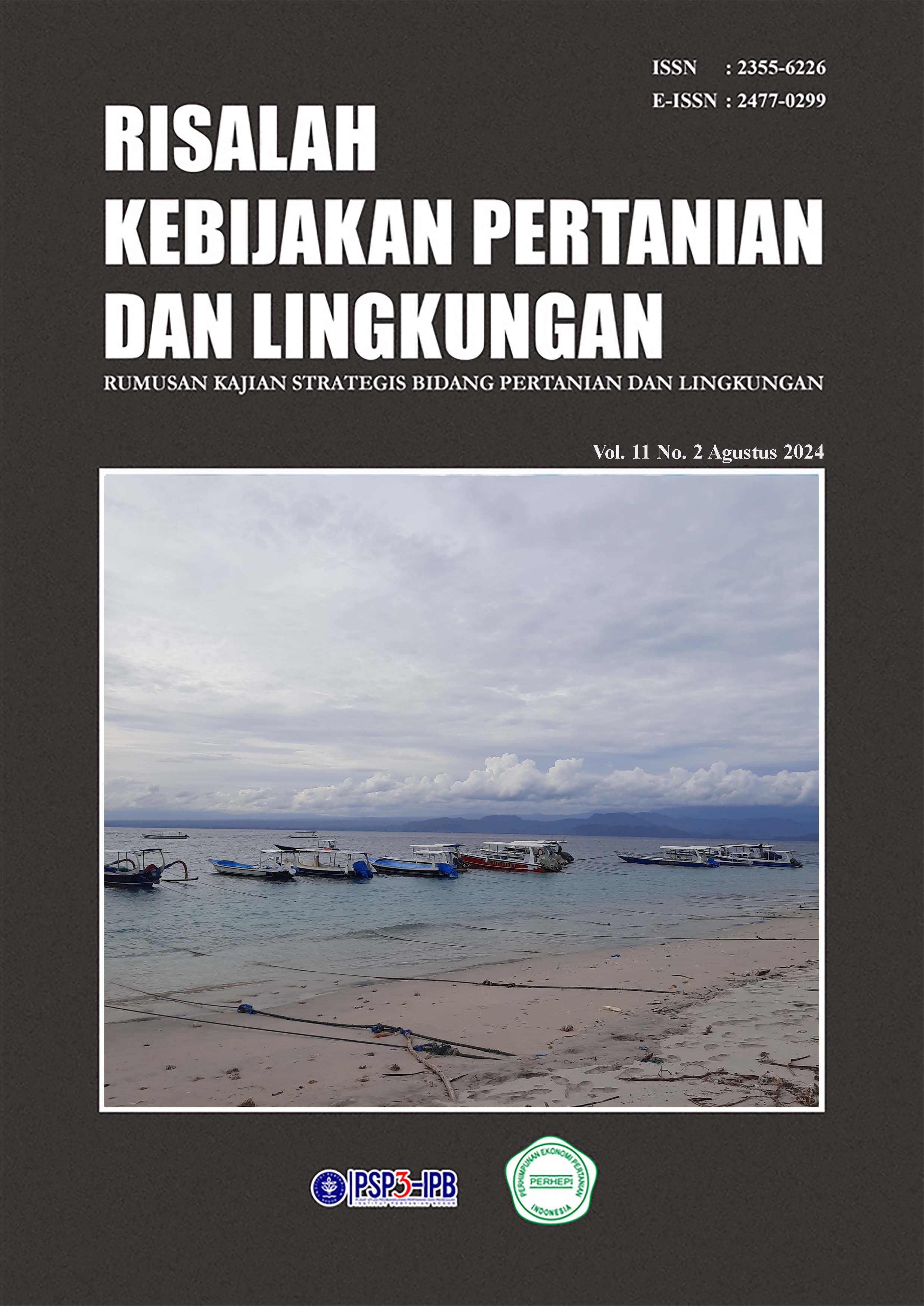ANALISIS PEMASARAN KOMODITAS CABAI MERAH DI DESA SIDODADI RAMUNIA KECAMATAN BERINGIN KABUPATEN DELI SERDANG
Abstrak
Cabai merah merupakan tanaman hortikultura yang mempunyai nilai ekonomi tinggi. Secara umum cabai merah dimanfaatkan sebagai bumbu dapur, obat herbal, kosmetik, pewarna dan sebagai bahan industri. Cabai merah merupakan salah satu sentra yang berada di Desa Sidodadi Ramunia, Kecamatan Beringin, Kabupaten Deli Serdang, dimana komoditas cabai merah ini banyak ditanam di daerah dataran rendah tersebut. Jika permintaan terhadap komoditas cabai merah meningkat maka akan menjadikan komoditas cabai merah sebagai salah satu kebutuhan pokok masyarakat. Teknik budidaya yang baik dan tepat sangat diperlukan untuk memperoleh hasil produksi yang berkualitas. Produksi cabai merah akan meningkat apabila produsen cabai merah (petani) mempunyai keterampilan dalam membudidayakan cabai merah. Hal ini bertujuan untuk menganalisis saluran pemasaran, margin pemasaran dan efisiensi pemasaran cabai merah. Metode penelitian yang digunakan adalah pendekatan kuantitatif dan metode deskriptif analitis. Pengambilan sampel dilakukan dengan menggunakan rumus Slovin untuk sampel petani, sedangkan lembaga pemasaran menggunakan metode Snowball Sampling. Hasil penelitian menunjukkan bahwa di Desa Sidodadi Ramunia terdapat 2 saluran pemasaran cabai merah, maka total margin pemasaran pada saluran I di tingkat pengecer sebesar Rp. 9.000/Kg dan total margin pemasaran pada saluran II sebesar Rp 13.000/Kg di tingkat pengepul dan pengecer. Efisiensi pemasaran cabai merah tergolong saluran pemasaran efisien karena kedua saluran mempunyai nilai efisiensi <50%. Namun saluran pemasaran yang lebih efisien terdapat pada saluran pemasaran cabai merah kedua.##plugins.generic.paperbuzz.metrics##
Unduh
Referensi
Ariani, Putri F. 2006. Analisis Strategi Promosi terhadap Volume Penjualan Minyak Goreng Kelapa (Studi Kasus pada PT. BARCO Jakarta). Jakarta.
Badan Pusat Statistik Indonesia. 2018. Badan Pusat Statistik Penduduk Usia Produktif.
Budiman VP, Nurhayati HSA, Arifin HS, Astawan M, Kaswanto RL. 2013. Optimalisasi Fungsi Pekarangan Melalui Program Percepatan Penganekaragaman Konsumsi Pangan (P2KP) di Kabupaten Bogor, Jawa Barat. Prosiding Lokakarya Nasional dan Seminar FKPTPI, Bogor, 2-4
Bugis II, Marjuni S, Nur I, Fatmawati, Zulham. 2016. Analisis Marjin Pemasaran, Efisiensi Pemasaran dan Keuntungan pada Tataniaga Cengkeh Kabupaten Seram Bagian Barat Provinsi Maluku (Studi Kasus di Desa Luhu. Jurnal Riset Edisi III Unibos Makassar. Vol. 2 (002) 2016: pp 1-14.
Fatmawati, Zulham. 2019. Analisis Margin dan Efisiensi Saluran Pemasaran Petani Jagung (Zea Mays) di Desa Suka Makmur Kabupaten Pohuwato Provinsi Gorontalo. Gorontalo Agriculture Technology Journal, Vol. 2(1) 2019: pp 19-29. DOI: https://doi.org/10.32662/gatj.v2i1.488
Hamdja FK, Nurrochmat DR, Yovi EY. 2015. Analisis Pemasaran Hasil Hutan Bukan Kayu (HHBK) Kenari di Pulau Makian Provinsi Maluku Utara. Risalah Kebijakan Pertanian dan Lingkungan. Vol. 2 (1) 2015: pp 25-32. DOI: https://doi.org/10.20957/jkebijakan.v2i1.10388
Hasanah EU, Widowati, dan Puri. 2011. Analisis Produktivitas Tenaga Kerja pada Industri Rumah Tangga Krecek di Kelurahan Segoroyoso. Jurnal Bisnis dan Ekonomi. Vol. 2 (2) 2011: pp 169-182.
Hia A, Nurmalina R, Rifin A. 2020. Efisiensi Pemasaran Cabai Rawit Merah di Desa Cidatar Kecamatan Cisurupan Kabupaten Garut. Forum Agribisnis (Agribusiness Forum). Vol. 10 (1) 2020: pp: 36-45. DOI: https://doi.org/10.29244/fagb.10.1.36-45
Immanuella BDU, dan Tinaprilla N. 2023. Analisis Efisiensi Tata Niaga Bawang Merah di Kecamatan Wanasari Kabupaten Brebes Jawa Tengah. Risalah Kebijakan Pertanian dan Lingkungan. Vol. 10 (1) 2023: pp : 34-46. DOI: https://doi.org/10.29244/jkebijakan.v10i1.34845
Kaswanto RL, Aurora RM, Yusri D, Sjaf S, Barus S. 2021. Kesesuaian Lahan untuk Komoditas Unggulan Pertanian di Kabupaten Labuhanbatu Utara. Analisis Kebijakan Pertanian, 19(2), 189-205. DOI: https://doi.org/10.21082/akp.v19n2.2021.189-205
Kim Y, Kim S. 2015 An Analysis on the Production Cost and Marketing Margin of Food: Tofu and Kimchi. Korean Journal of Agricultural Science, Vol. 42 (3) 2015: pp: 285-291. DOI: https://doi.org/10.7744/cnujas.2015.42.3.285
Kotler P, Hayes T, Bloom PN. 2002. Marketing professional services. Prentice Hall.
Mardikanto T. 2007. Sistem Penyuluhan Pertanian. Surakarta: Penerbit Universitas Sebelas Maret.
Mubyarto. 2002. Pengantar Ekonomi Pertanian (Edisi ke-3). Jakarta: LP3ES.
Mucharam I, Rustiadi E, Fauzi A, Harianto. 2022. Signifikansi Pengembangan Indikator Pertanian Berkelanjutan untuk Mengevaluasi Kinerja Pembangunan Pertanian Indonesia. Risalah Kebijakan Pertanian dan Lingkungan: Rumusan Kajian Strategis Bidang Pertanian dan Lingkungan, 9(2), 61-81. https://doi.org/10.29244/jkebijakan.v9i2.28038 DOI: https://doi.org/10.29244/jkebijakan.v9i2.28038
Nasution AH, Hanter, Rahman P. 2019. Keragaan Pemasaran Cabai Merah di Sumatera Utara Kasus Kecamatan Beringin, Kabupaten Deli Serdang, Jurusan Agribisnis Hortikultura.Fakultas Pertanian. Politeknik Wilmar Bisnis Indonesia Medan. DOI: https://doi.org/10.37149/jia.v5i5.14225
Rahayu P, Simanullang ES. 2023. Determinan Produksi dan Analisis Kelayakan Usahatani Cabai Merah: Studi Kasus Desa Tanjung Ibus Kecamatan Secanggang Kabupaten Langkat. Risalah Kebijakan Pertanian dan Lingkungan Rumusan Kajian Strategis Bidang Pertanian dan Lingkungan, 10(3), 165-178. https://doi.org/10.29244/jkebijakan.v10i3.51050 DOI: https://doi.org/10.29244/jkebijakan.v10i3.51050
Rejekiningrum P, Kartiwa B. 2022. Kontribusi Pembangunan Infrastruktur Panen Air terhadap Peningkatan Pendapatan dan Kesejahteraan Petani. Risalah Kebijakan Pertanian dan Lingkungan Rumusan Kajian Strategis Bidang Pertanian dan Lingkungan, 9(1), 37-51. https://doi.org/10.29244/jkebijakan.v9i1.28073 DOI: https://doi.org/10.29244/jkebijakan.v9i1.28073
Santosa E. 2015. Pengembangan Tanaman Iles-Iles Tumpangsari untuk Kesejahteraan Petani dan Kemandirian Industri Pangan Nasional. Risalah Kebijakan Pertanian dan Lingkungan Rumusan Kajian Strategis Bidang Pertanian dan Lingkungan, 1(2), 73-79. DOI: https://doi.org/10.20957/jkebijakan.v1i2.10288
Soekartawi. 2003. Teori Ekonomi Produksi dengan Pokok Bahasan Analisis Cobb-Douglas. Jakarta: PT rajagrafindo Persada.
Sudiyono A. 2004. Pemasaran pertanian. Malang: Universitas Muhammadiyah Malang.
Sunardi, Kaswanto RL, Sjaf S. 2020. Relationship between Plant Biodiversity and Carbon Stock in Rural Area of Cisadane Watershed. Jurnal Ilmu Lingkungan, 18(3), pp.610-616. DOI: https://doi.org/10.14710/jil.18.3.610-616
Tjiptono F. 2007. Strategi Pemasaran. Edisi Ketiga. Yogyakarta.
##submission.copyrightStatement##
##submission.license.cc.by4.footer##PUBLICATION ETHICS
Jurnal Risalah Kebijakan Pembangunan Pertanian dan Lingkungan (JRKPL) is a peer-reviewed journal publishing original research to develop a coherent and respected network of landscape architecture knowledge. JRKPL committed to upholding the highest standards of publication ethics that clarifies ethical behavior of all parties involved in publishing a scientific article in JRKPL.
As publisher of JRKPL, PSP3-LPPM IPB and PERHEPI takes its duties of guardianship all stages of publishing process and we recognize our ethical and other responsibilities.
Duties of Authors
An author should not publish manuscripts describing essentially the same research in more than one journal or primary publication. Submitting the same manuscript to more than one journal is unacceptable and constitutes unethical publishing behavior. In general, an author should not submit for consideration in another journal a previously published paper.
Authorship should be limited to those who have made a significant contribution to the manuscript and should be listed as co-authors. Where there are others who have participated in certain substantive aspects of the research project, they should be acknowledged as contributors. The corresponding author should ensure that all co-authors have seen and approved the final version of the paper and have agreed to its submission for publication.
The authors should ensure that they have written entirely original works, and if the authors have used the work and/or words of others, that this has been appropriately cited or quoted. Plagiarism are include passing off another paper as the author own paper, copying or paraphrasing substantial parts of another paper (without attribution) and claiming results from research conducted by others. Plagiarism constitutes unethical publishing behavior and is unacceptable. Plagiarism detected works will be banned for further publication procedure.
The authors acknowledge that they have disclosed all and any actual or potential conflicts of interest with their work or partial benefits associated with it. All sources of financial support for the project should be disclosed. Potential conflicts of interest should be disclosed at the earliest stage possible.
Duties of the Editorial Board
Review Process
JRKPL is committed to objective and fair double-blind peer-review to prevent any actual or potential conflict of interests between the editorial and review personnel and the reviewed material. JRKPL chooses reviewers based on their expertise (whose most closely matches the topic of the paper). At least 2 reviewers are invited to evaluate a manuscript. In cases of controversy or disagreement regarding the merits of the work, an additional review will be solicited. The JRKPL editor mediates all interaction between authors and reviewers, and the review results owned by JRKPL.
Publication Decisions
The editor of a peer-reviewed JRKPL is responsible for deciding which of the articles submitted to the journal should be published. The validation of the work in question and its importance to researchers and readers must always drive such decisions. The final decision on article acceptance based on reviewer's opinions, suggestions, and comments. The editor may confer with other editors or reviewers in making this decision.
Fair Play
JRKPL evaluates manuscripts only based on the intellectual content. No race, gender, sexual orientation, religious belief, ethnic origin, citizenship, or political philosophies of the authors are considered in the evaluation process.
Confidentiality
JRKPL assure the confidentially of the manuscripts, actors, and other related information on the publishing process. Only corresponding author, reviewers, potential reviewers, other editorial advisers, and the publisher are allows for the information.
Disclosure
Unpublished materials disclosed in a submitted manuscript must not be used in an editor's own research without the express written consent of the author. Privileged information or ideas obtained through peer review must be kept confidential and not used for personal advantage.
Duties of reviewers
(1) Objectivity: Reviewer should provide written and unbiased feedback to the authors, personal criticism of the author is inappropriate. Reviewer comments should be clearly with supporting arguments indicating whether the writing is concise and relevant
(2) Expertise: Reviewer who feels unqualified to review the research reported in a manuscript or knows that its prompt review will be impossible should notify the editor and excuse himself from the review process.
(3) Acknowledgement of sources: Reviewer suggest relevant published work that has not been cited by the authors to improve the quality of the manuscript,
(4) Confidentiality: Reviewer should maintain the confidentiality of the review process. Privileged information or ideas obtained through peer review must be kept confidential and not used for personal advantage.
(5) Disclosure and conflict of interest: Unpublished materials disclosed in a submitted manuscript must not be used in a reviewer own research without the express written consent of the author. Reviewers should not consider manuscripts in which they have conflicts of interest resulting from competitive, collaborative, or other relationships or connections with any of the authors, companies, or institutions connected to the papers.























